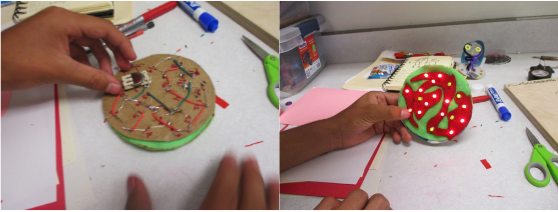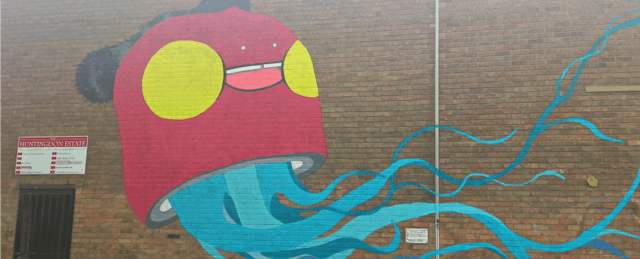“What did you make today in school?” Ask students this, and they may pause. This is a different question than, “What did you do today?”
How many students see school as a place to express themselves as makers and creators? While there is growing interest in putting makerspaces in schools, many groups—including girls and students of color—are underrepresented in these learning environments.
It’s time that we broaden access to creating and making with technology. First, let’s define equity, inclusion, and diversity in education. A few weeks ago, Emmanuel Schanzer of the nonprofit Bootstrap spoke at the Infosys Crossroads Conference. His definitions really ring true for what I have seen in both formal and informal learning spaces:
- Equity describes who has the keys to the room.
- Inclusion describes who is welcome in the room.
- Diversity describes who is in the room.
We must give girls and students of color the keys to the room and empower them to shape what happens in that room so that they understand that they belong. We know that just putting technology into schools is not enough. The crucial ingredients are:
- Asking questions and engaging in journeys relevant to students’ lives
- Ongoing teacher training
- Engaging families, and local communities in the learning journey
These maker journeys and questions need to be like jellyfish—sticky, transparent, flexible and porous.

We need to find the sticky questions. Students need to view technology explorations as relevant both outside and inside of school. If the questions do not make them curious or resonate with their daily lives or culture, then the technology journey lives and dies in the classroom. The students feel no ownership, and it doesn’t stick.
Girls and students of colors can often start with low confidence in their ability to design and create with tech tools. We need to start maker journeys with topics that they are knowledgeable about—themselves, and their communities. Students can prototype ideas for addressing neighborhood needs, for example, through the design of public spaces and transit hubs using CAD tools and physical cardboard models.
Then, after starting with questions rooted in the familiar, the maker activities can progressively engage with questions and journeys that reach beyond the students’ lives and communities, enabling them to see themselves as a vital part of larger conversations. For example, Future Engineers invites K-12 students to invent tools and containers that are specific to astronaut needs in microgravity.

We need to be transparent with making. The materials need to be transparent. That is, as much as possible, we need to have materials that are low-cost and easy to find outside the classroom: HVAC tape, tin foil, recycled pudding cups, etc. If a makerspace is stocked only with expensive educational kits that hide the circuitry’s “guts”, there is a lost opportunity for students to learn and connect with the fundamentals of circuitry. Use breadboards, circuitry materials and build from scratch, using an array of conductive and other simple materials, such as LED lights, buzzers and small motors. When these materials are plentiful, the iterative explorations result in deeper learning and student ownership of knowledge.
The learning needs to be transparent. We need to make clear that teachers are learners and student are teachers. When we leverage student expertise, we can open up space for them to experience the role of being the educator. I like to use student name tags that have two prompt lines: “My name is….”, and, “I can teach you how to….” When students share their knowledge about preparing Vietnamese noodles, riding horses, dance moves, or soccer skills, they realize that they are educators too. In addition, teachers need support as learners. We need to be devote the same amount of funding to teachers’ professional development as we to the technology tools coming into their spaces.
We need to ensure that the process of making is more transparent. If students reflect on project process in journals, the hurdles and failures are neither ignored nor celebrated, but rather, documented as pivot points—moments of learning and shifting in their maker exploration. This way, students understand that it is the process, not the physical product of their efforts, that they carry forward into their next Maker journey.

Make the journey flexible. The framing of Maker journeys and the guiding questions need to be driven by the interests of the students. I met a director of a makerspace who did not understand why girls were dropping out of his after school STEM club. The projects were cars, bridges, launchers, and other things that do not always resonate with girls. But what about designing lockets, light-up wands, scale models of rooms with embedded circuitry, hacked toy watches, and sewing circuitry? All these create opportunities for creative expression for all students and also build engineering skills. Lockets, for example, can be a way to explore snap fit, slip fit and assembly design. Also, think about the posters and other visual images you put up in your makerspace. What you have on your walls are silent cues that will either make your students feel welcome or not welcome.

Make the journey porous. It is important that the learning goes beyond the classroom and extends into home and community. Having a range of make and take projects is important. At-risk youth may not have many resources outside of school, so the opportunity to bring a project home and live with it, share with the family, and iterate is huge. If we rely upon expensive kits that stay in the classroom, then students who do not have resources can feel that making with technology is only for school and not a part of their creative lives outside of school. Youth can teach back to the community what they learn in the makerspace. They can do this through pop-ups in public spaces at festival, farmers markets and other events. This way, technology tools become integrated into the students’ conversations with their local community, and can enhance their leadership skills. The Make-HER Mother and Daughter STEM program at the Sunnyvale Library in northern California is a great model; it’s a safe and exciting space for women and girls to explore technology and engineering skills together. Such programming in public libraries can help parents build a common vocabulary with their children around technology and making.
It is also important to recognize that many underserved students do not experience a consistent and familiar school staff from year to year. We need to leverage the surrounding informal learning spaces to support in-school learning; it is often the public library, summer camp and after-school programs that provide continuity.
If we build technology journeys and makerspaces that speak to the reality of students lives, a broader cross section of students will grow into confident makers, STEM explorers, and creators of culture. They will have the keys to the room, and will know that they belong.


